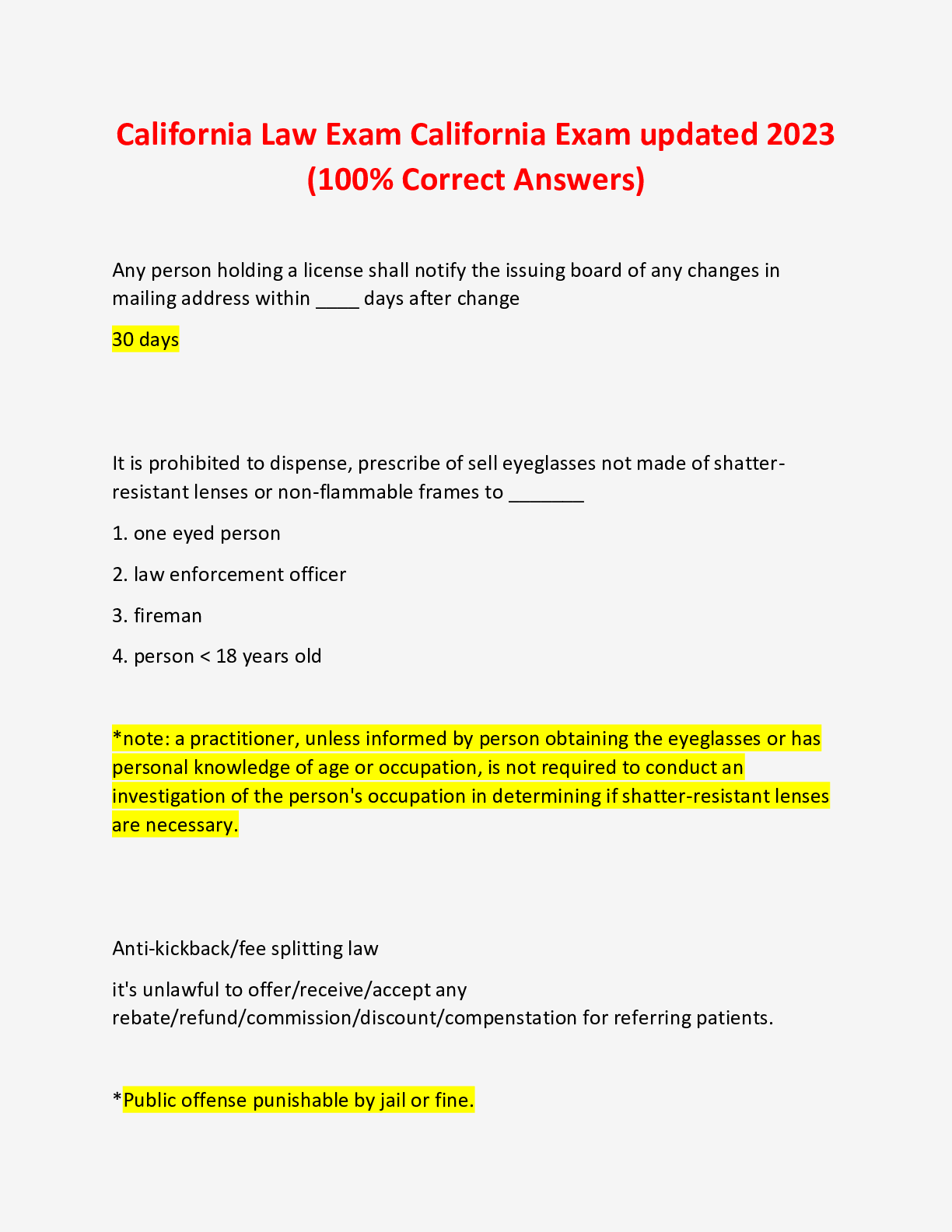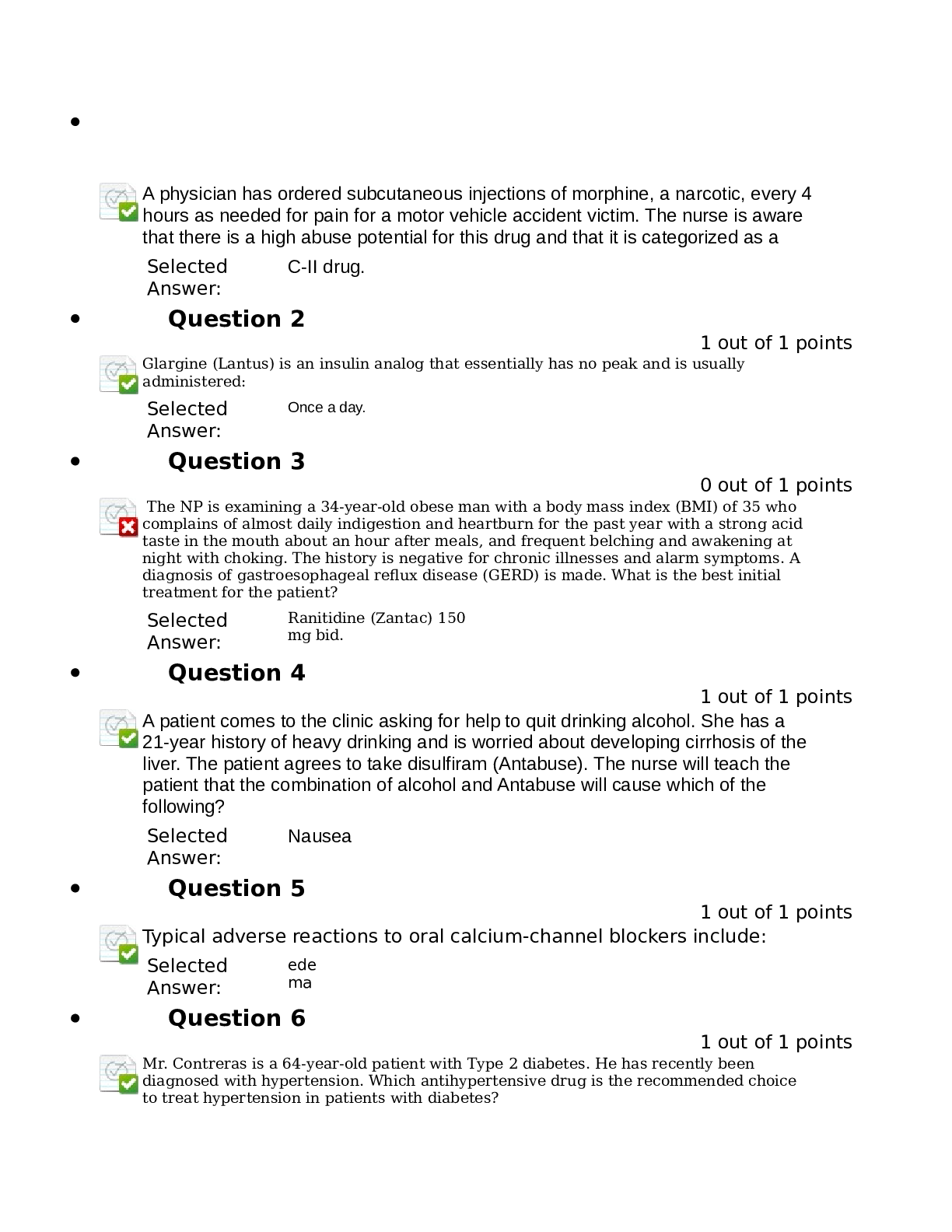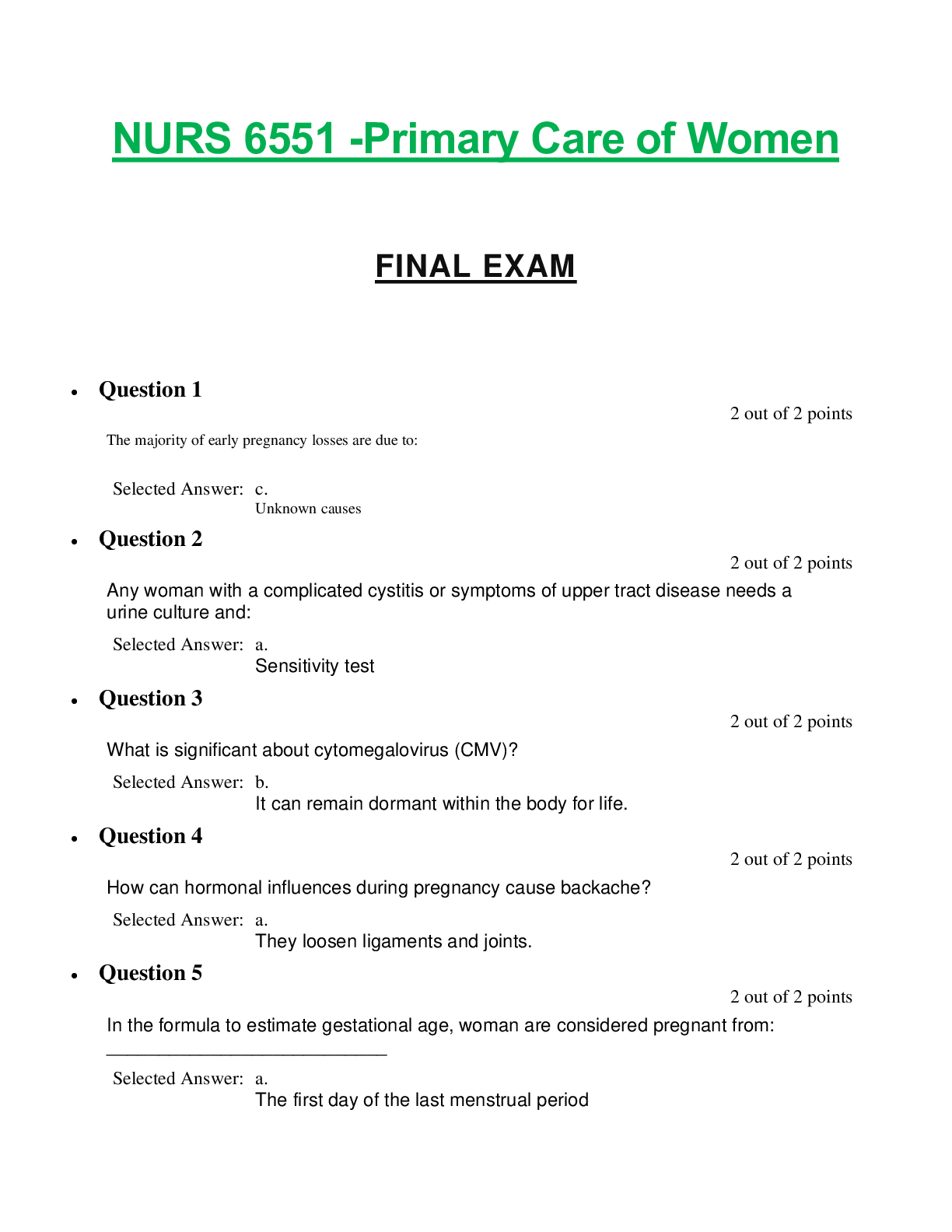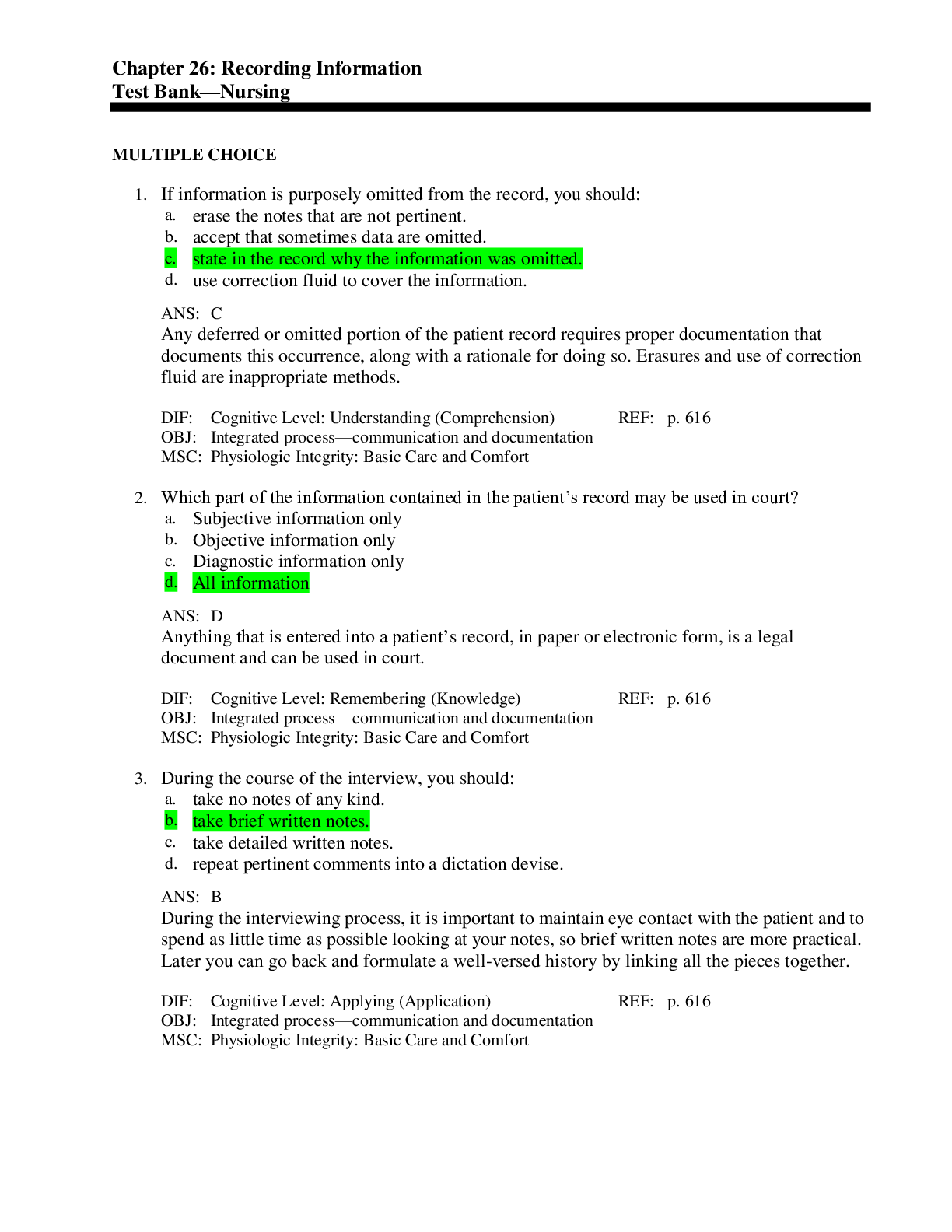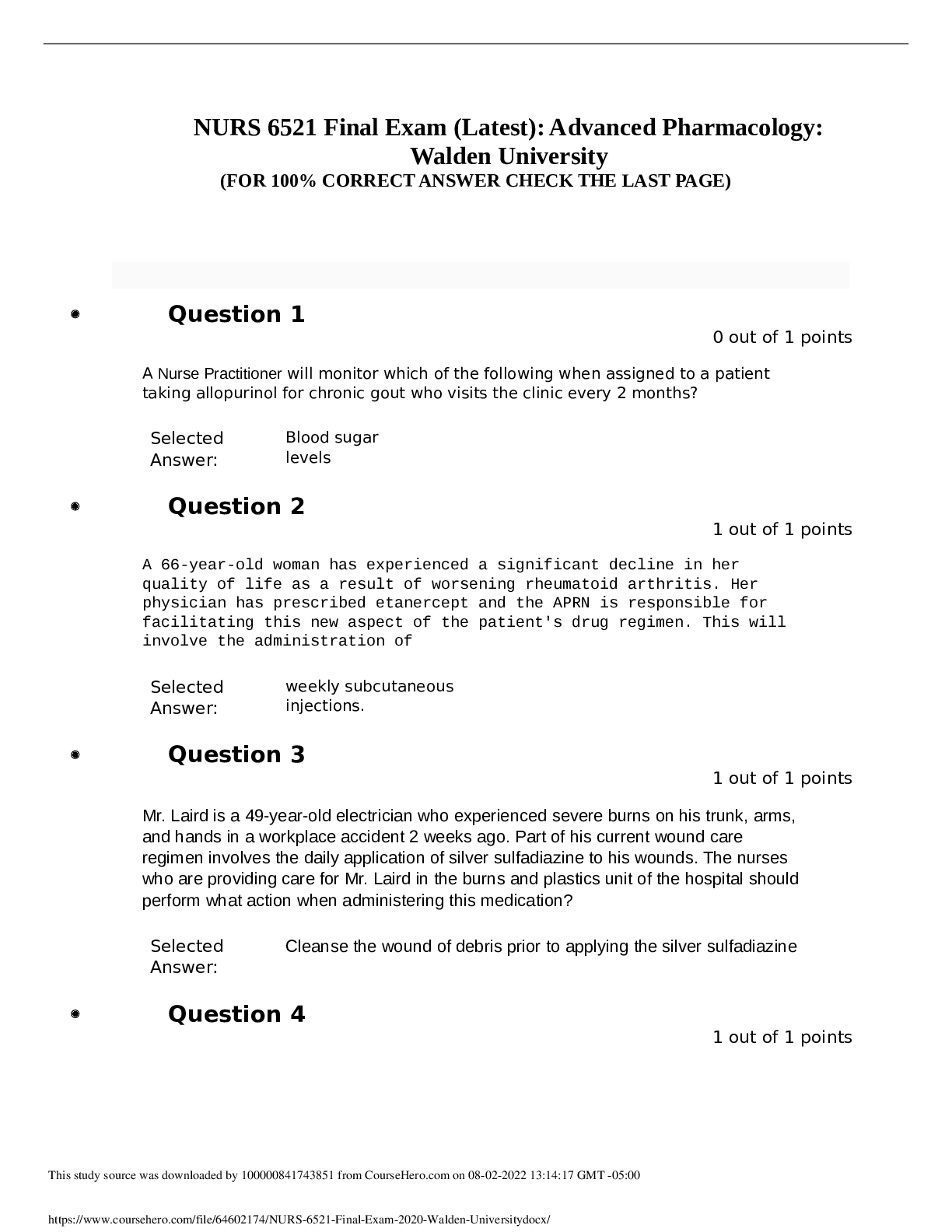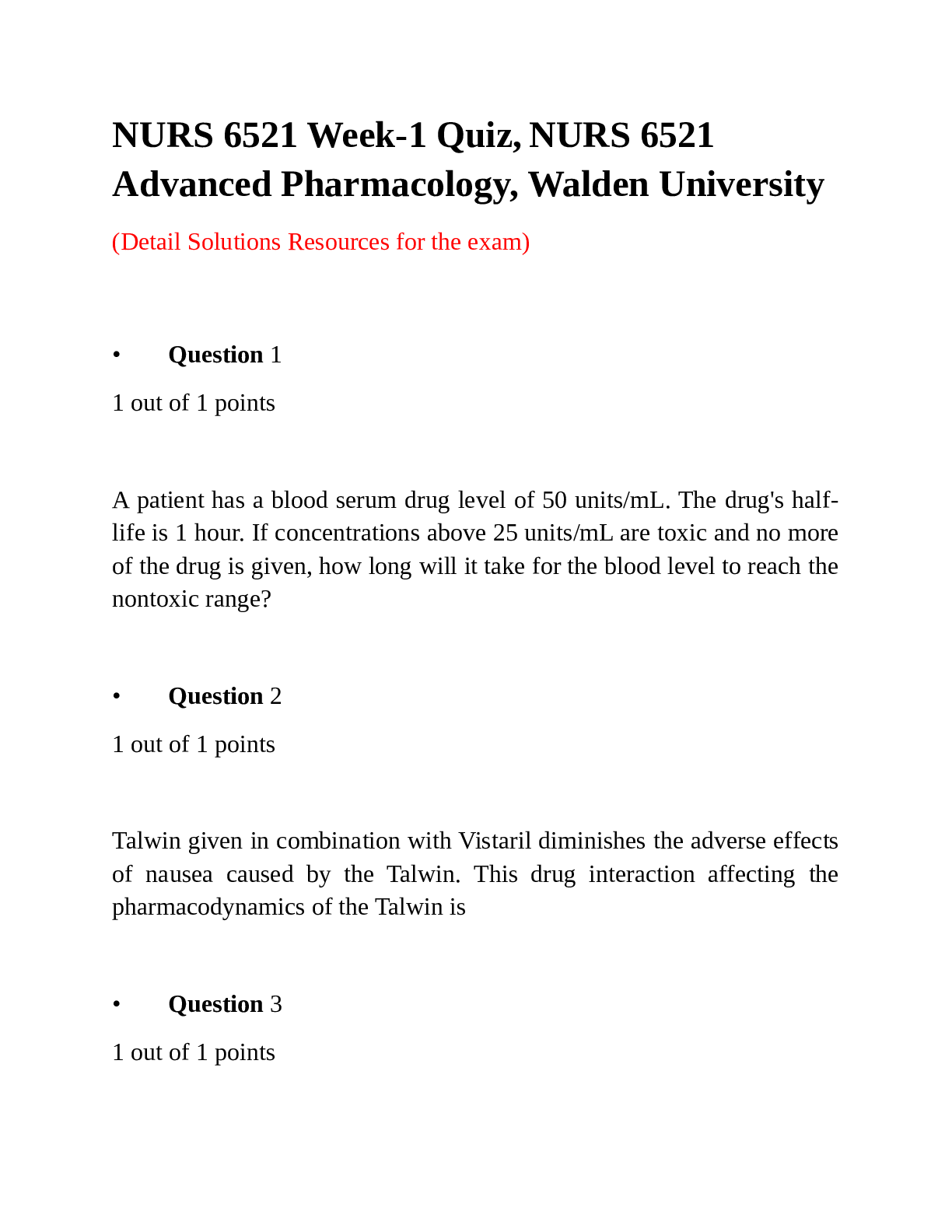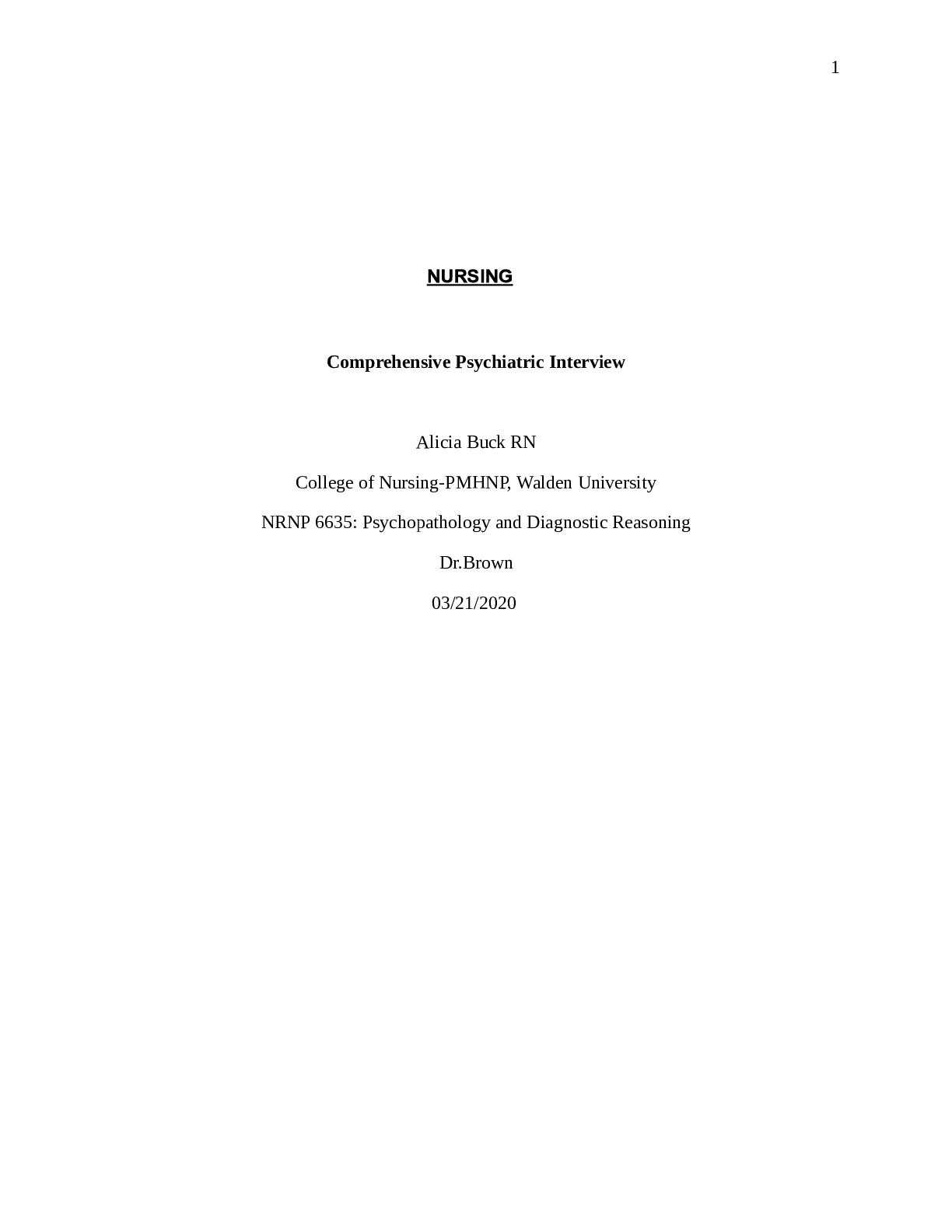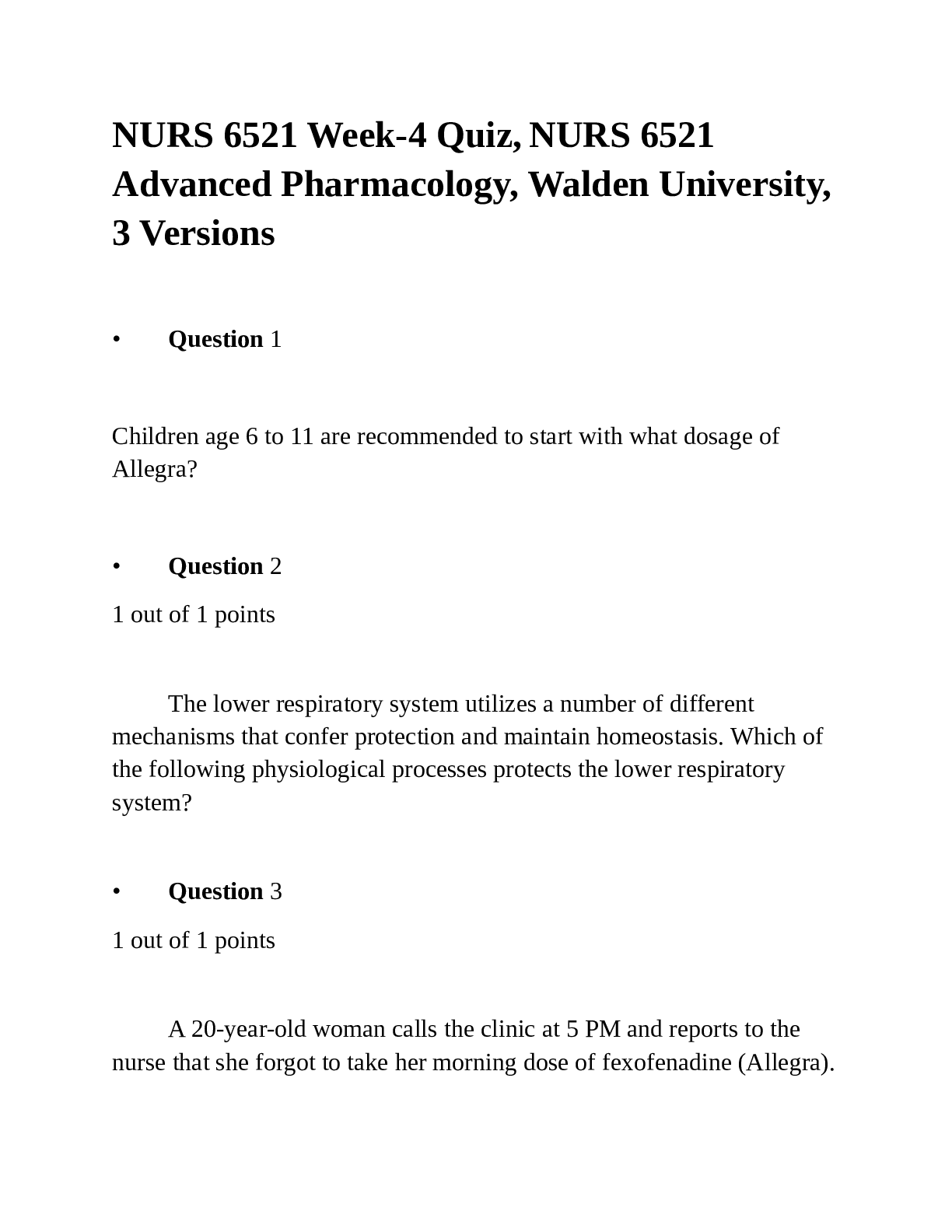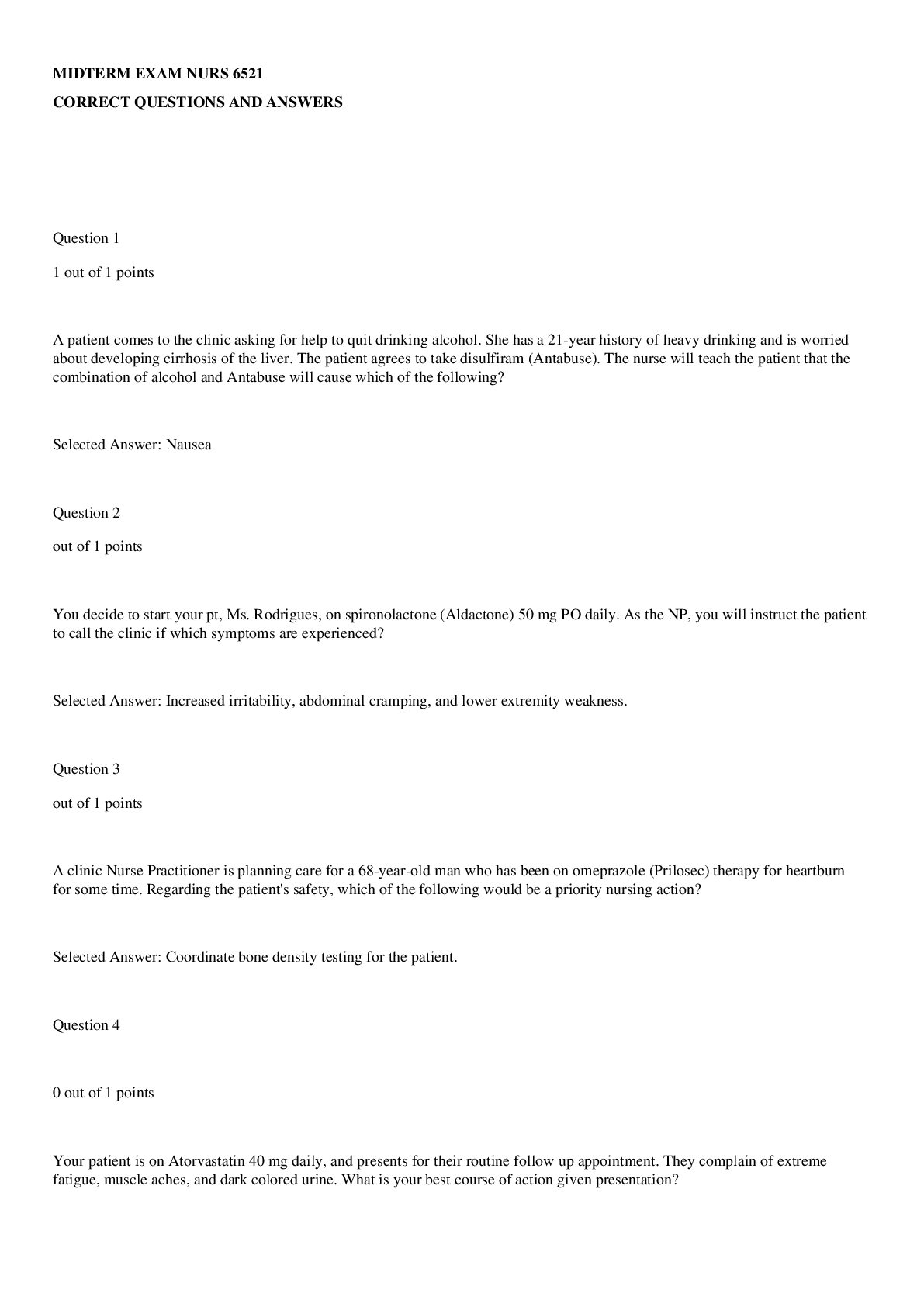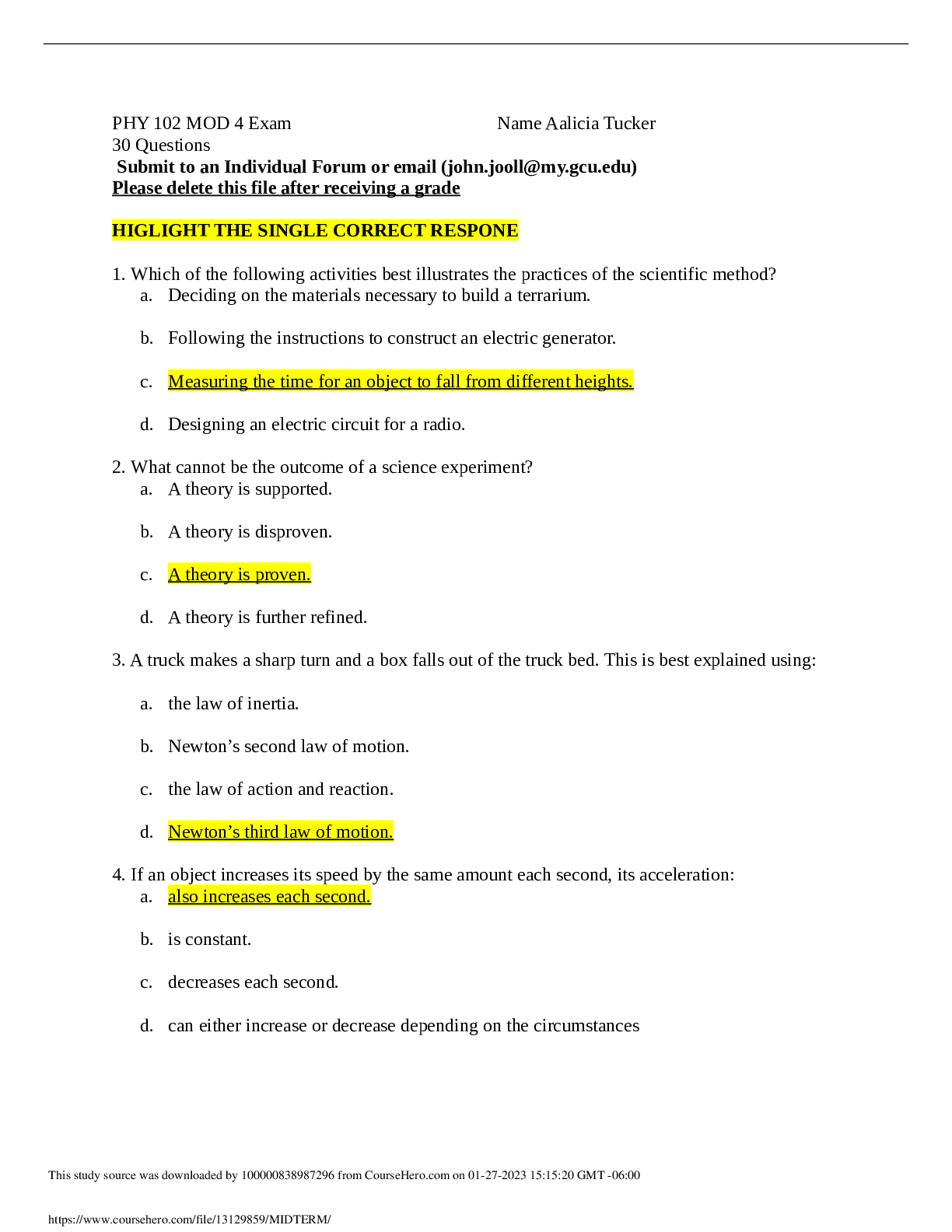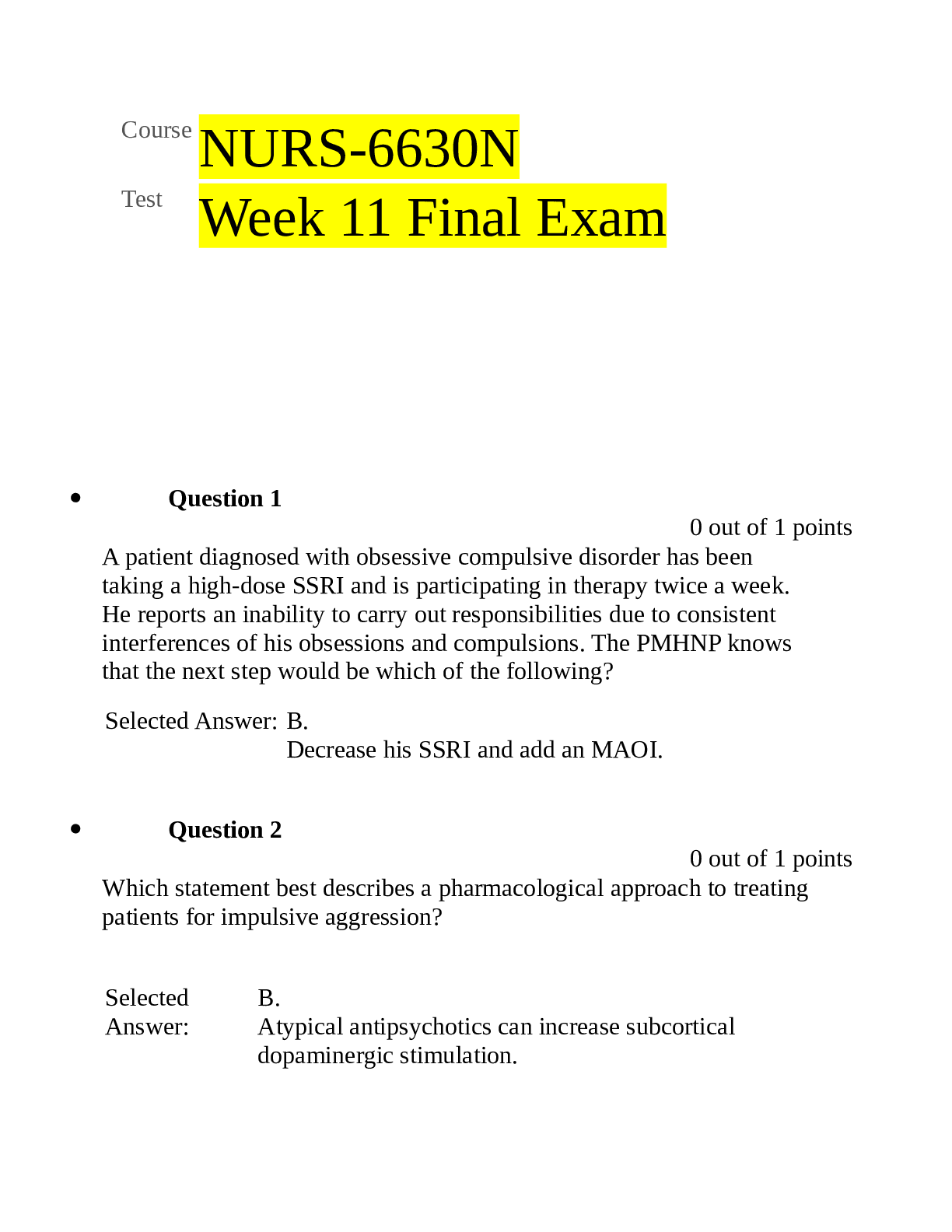NURS 6560 Midterm Exam 2020 , Walden University | (Already Graded A+)
Document Content and Description Below
NURS 6560 Midterm Exam: Advanced Practice Care of Adults in Acute Care Settings: Walden University Question 1 S. is a 59-year-old female who has been followed for several years for aortic... regurgitation. Serial echocardiography has demonstrated normal ventricular function, but the patient was lost to follow-up for the last 16 months and now presents complaining of activity intolerance and weight gain. Physical examination reveals a grade IV/VI diastolic aortic murmur and 2+ lower extremity edema to the midcalf. The AGACNP considers which of the following as the most appropriate management strategy? A. Serial echocardiography every 6 months B. Begin a calcium channel antagonist C. Begin an angiotensin converting enzyme (ACE) inhibitor D. Surgical consultation and intervention Question 2 An ascending thoracic aneurysm of > 5.5 cm is universally considered an indication for surgical repair, given the poor outcomes with sudden rupture. Regardless of the aneurysm’s size, all of the following are additional indications for immediate operation except: A. Comorbid Marfan’s syndrome B. Enlargement of > 1 cm since diagnosis C. Crushing chest pain D. History of giant cell arteritis Question 3 Jasmine is a 31-year-old female who presents with neck pain. She has a long history of injection drug use and admits to injecting opiates into her neck. Physical examination reveals diffuse tracking and scarring. Today Jasmine has a distinct inability to turn her neck without pain, throat pain, and a temperature of 102.1°F. She appears ill and has foul breath. In order to evaluate for a deep neck space infection, the AGACNP orders: A. Anteroposterior neck radiography B. CT scan of the neck C. White blood cell (WBC) differential D. Aspiration and culture of fluid Question 7 Traumatic diaphragmatic hernias present in both acute and chronic forms. Patients with a more chronic form are most likely to be present with: A. Respiratory insufficiency B. Sepsis C. Bowel obstruction D. Anemia Question 8 The AGACNP is managing a patient in the ICU who is being treated for a pulmonary embolus. Initially the patient was stable, awake, alert, and oriented, but during the last several hours the patient has become increasingly lethargic. At change of shift, the oncoming staff nurse appreciates a profound change in the patient’s mental status from the day before. Vital signs and hemodynamic parameters are as follows: BP 88/54 mm Hg Pulse 110 bpm Respiratory rate 22 breaths per minute SaO2 93% on a 50% mask Systemic vascular resistance (SVR) 1600 dynes ∙ sec/cm5 Cardiac index 1.3 L/min Pulmonary capillary wedge pressure (PCWP) 8 mm Hg This clinical picture is most consistent with which shock state? A. Hypovolemic B. Cardiogenic C. Distributive D. Obstructive Question 9 When counseling patients to prevent postoperative pulmonary complications, the AGACNP knows that with respect to smoking cessation, the American College of Surgeons and National Surgical Quality Improvement Program guidelines are clear that patients who stop smoking weeks before surgery have no increased risk of smokingrelated pulmonary complications. A. 2 B. 4 C. 6 D. 8 Question 6 One of the earliest findings for a patient in hypovolemic shock is: A. A drop in systolic blood pressure (SBP) < 10 mm Hg for > 1 minute when sitting up B. A change in mental status C. SaO2 of < 88% D. Hemoglobin and hematocrit (H&H) < 9 g/dL and 27% Question 7 Traumatic diaphragmatic hernias present in both acute and chronic forms. Patients with a more chronic form are most likely to be present with: A. Respiratory insufficiency B. Sepsis C. Bowel obstruction D. Anemia Question 8 The AGACNP is managing a patient in the ICU who is being treated for a pulmonary embolus. Initially the patient was stable, awake, alert, and oriented, but during the last several hours the patient has become increasingly lethargic. At change of shift, the oncoming staff nurse appreciates a profound change in the patient’s mental status from the day before. Vital signs and hemodynamic parameters are as follows: BP 88/54 mm Hg Pulse 110 bpm Respiratory rate 22 breaths per minute SaO2 93% on a 50% mask Systemic vascular resistance (SVR) 1600 dynes ∙ sec/cm5 Cardiac index 1.3 L/min Pulmonary capillary wedge pressure (PCWP) 8 mm Hg This clinical picture is most consistent with which shock state? A. Hypovolemic B. Cardiogenic NURS 6560 Advanced Practice Care of Adults in Acute Care Settings II NURS 6560 Final Exam / NURS 6560N Final Exam / NURS6560 Final Exam / NURS6560N Final Exam (Latest-2020)(100 Q & A , Verified and 100% Correct Answers) NURS 6560 Midterm Exam / NURS 6560N Midterm Exam / NURS6560 Midterm Exam / NURS6560N Midterm Exam (Latest-2020) (100 Q & A, Verified and 100% Correct Answers) [Show More]
Last updated: 1 year ago
Preview 1 out of 7 pages
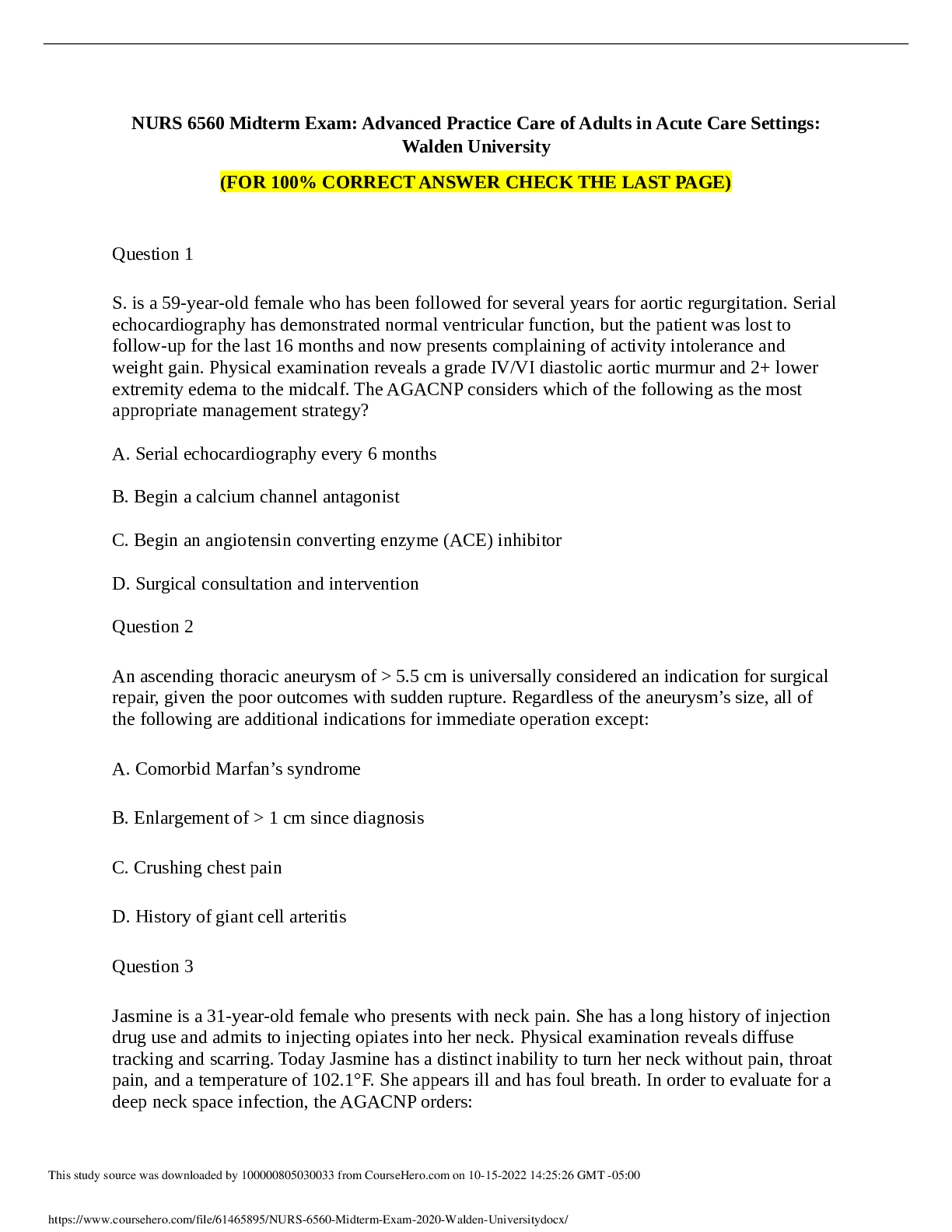
Reviews( 1 )

by [email protected] · 2 years ago
Document information
Connected school, study & course
About the document
Uploaded On
Mar 19, 2021
Number of pages
7
Written in
Additional information
This document has been written for:
Uploaded
Mar 19, 2021
Downloads
1
Views
63



.png)










